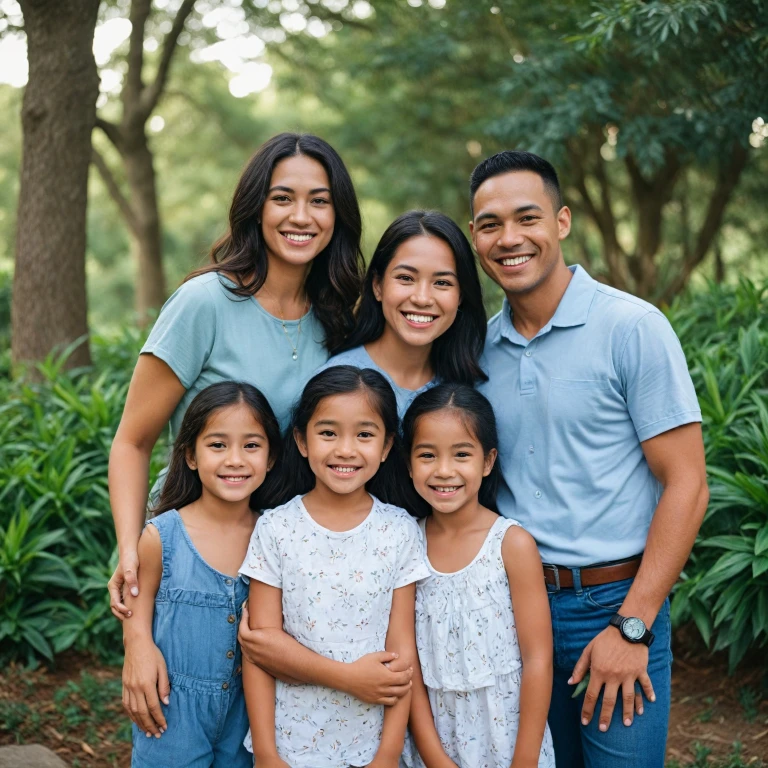
Understanding Lens Basics
Grasping the Essentials of Lenses
Understanding lens basics is crucial when it comes to elevating your family photography skills. The journey begins by becoming familiar with the key elements that define a lens's performance. These include focal length, aperture, and compatibility with your camera system.- Focal Length: This determines how "zoomed in" your photos will appear. For family portraits, a focal length of 85mm to 105mm is often recommended, as it provides a flattering perspective without distorting facial features.
- Aperture: A lower aperture (represented by a smaller f-number) allows more light to enter the lens, making it ideal for low light conditions and achieving a lovely background blur, also known as bokeh.
- Compatibility: Aligning your lens with your camera system is essential. If you're using a Canon EOS camera, ensure you're exploring options within the Canon USM lens series for smooth autofocus and reliability in portrait photography.
Prime vs. Zoom Lenses
The Battle of Prime and Zoom
When diving into portrait photography, the choice between prime and zoom lenses is vital. Prime lenses, known for their fixed focal lengths, excel in delivering sharp images and beautiful bokeh, making them ideal for capturing stunning family portraits. They often have wide apertures, which make them perfect in low light scenarios, providing excellent depth of field and soft backgrounds.
On the other hand, zoom lenses offer more versatility. With a range of focal lengths at your disposal, they are practical for dynamic family settings where members are in constant motion or multiple compositions are desired. Zoom lenses such as the Canon USM series are renowned for their fast focusing capabilities, making them a great choice for candid shots during family photography sessions.
For those interested in diving deeper into this decision, you might want to explore these top Canon lenses for stunning portrait photography to guide your purchase. Understanding the strengths and weaknesses of each type of lens is essential to capturing compelling family moments with your camera.
Top Lens Recommendations
Recommended Lenses for Family Portraits
When it comes to capturing those cherished family moments, selecting the right lens can make all the difference. Here are some top recommendations that cater to various needs and preferences in family photography:
- Canon EF 50mm f/1.8 STM: Known as the "nifty fifty," this prime lens is a favorite for portrait photography. Its wide aperture of f/1.8 allows for beautiful background blur, making your subjects stand out. It's a great choice for those using Canon EOS cameras, especially in low light conditions.
- Canon EF 85mm f/1.4L IS USM: This lens is perfect for full-frame cameras and offers a flattering focal length for portraits. The image stabilization feature helps in capturing sharp images even in challenging lighting. It's a lens that many photographers love for its ability to produce stunning, professional-looking photos.
- Canon RF 24-70mm f/2.8L IS USM: For those using Canon's mirrorless cameras, this zoom lens provides versatility with its range of focal lengths. It's ideal for lifestyle family photography, allowing you to switch from wide-angle shots to close-ups without changing lenses.
- Sigma 35mm f/1.4 DG HSM Art: If you're looking for a lens that offers a wider perspective, this Sigma lens is a great option. It's compatible with Canon cameras and provides excellent sharpness and color rendition, making it suitable for capturing family portraits in various settings.
Each of these lenses offers unique benefits, whether you're shooting in a studio or outdoors. For more insights on selecting the ideal lenses for different photography styles, you might find this guide on landscape photography lenses helpful, as it discusses focal lengths and lens characteristics that can also apply to portrait photography.
Lighting and Lens Compatibility
How Lighting Influences Your Lens Choice
When you're photographing family portraits, understanding how light interacts with your chosen lens is crucial for achieving stunning results. The way a lens performs under different lighting conditions can make or break your photos, whether you're capturing moments indoors or outside. A lens with a wide aperture is indispensable for low light conditions, such as indoor family portraits or evening gatherings. This means a lens with an aperture of f/1.8 or f/2.8, for instance, will allow more light to hit the camera sensor, ensuring you get sharp images with minimal noise. Prime lenses, known for their wide apertures, often perform exceptionally in these settings.The Role of Aperture
Choosing a lens with a suitable aperture is essential for controlling the depth of field in family photography. A wider aperture (lower f-number) will provide a shallow depth of field, beautifully blurring the background and helping your subjects stand out in portraits. This effect is particularly desirable in family photos where the focus should be on the familial bond and expressions. For outdoor family photography where you have plenty of natural light, a lens with a variable aperture like many zoom lenses can be beneficial. These lenses offer flexibility, allowing you to adjust to varying light conditions without needing to switch lenses frequently.Compatibility with EOS Full Frame Cameras
If you're using a Canon EOS full-frame camera, it's essential to ensure that your chosen lens is compatible and maximizes the sensor's capabilities. Canon lenses, especially those equipped with the USM (Ultrasonic Motor), provide fast focusing and are often designed with their cameras' specifics in mind. A compatible lens will not only offer optimal performance but will also integrate seamlessly with your camera’s features, playing a significant role in achieving that 'wow' factor in your portraits.Embrace Versatility with Wide and Zoom Lenses
Family photography often demands a versatile lens to capture both intimate close-ups and wide group shots. A combination of a zoom lens with varying focal lengths or a wide-angle lens could be just what you need. A zoom lens allows you to adjust your focal range quickly without changing positions, which is pivotal for capturing candid moments during a family session. Having a diverse lens collection enables you to be prepared for any lighting situation, ensuring that your family portraits are consistently vibrant and full of life. Remember, the key to capturing memorable family photos is understanding how light and lenses work hand in hand to create beautifully composed images.Tips for Capturing the Perfect Family Portrait
The Essential Tips for Family Portrait Perfection
Achieving the best family portraits requires a harmonious blend of camera techniques, an understanding of your lens's capabilities, and a touch of creativity. Here are some essential tips to get you started.- Master the Art of Composition: To elevate your photography, focus on creating a compelling composition. Incorporate natural elements into the frame and utilize the environment to add depth and interest to your portraits. A wide-angle lens, especially on a full frame camera, can be great for including more of the background in your photos, adding context to the scene.
- Lighting Is Key: Good lighting can significantly enhance the quality of your family portraits. Natural light is often the most flattering; consider shooting during the golden hour for soft, warm tones. When shooting in low light, a lens with a wide aperture, such as an f/1.8, helps capture brighter, sharper images.
- Utilize Depth of Field: Depth of field plays a crucial role in making family portraits stand out. Prime lenses with larger apertures enable you to create a smooth, creamy background blur that draws attention to the subjects. This technique is particularly effective for isolating your family from the surroundings, adding a professional touch to your photos.
- Connect with the Family: Capturing genuine emotions and interactions is integral to family photography. Encourage your subjects to interact naturally and provide gentle direction to help them feel at ease. Love and laughter captured in their truest form often make for the best moments.
- Experiment with Angles and Perspectives: Changing your shooting angle or perspective can produce unique and engaging photos from unexpected viewpoints. Get creative with focal lengths and play around with the positioning of your EOS camera to discover fresh new ways to capture that cherished family vibe.
Post-Processing and Lens Effects
Enhancing Your Family Portraits: Post-Processing with Lenses
Capturing family portraits that resonate with emotion and love can be greatly influenced by the post-processing techniques you apply. Leveraging the lens’s capabilities during editing will elevate your family photography, ensuring each photo tells a unique story. In the realm of post-processing, understanding the aperture and focal length used during the shoot will inform your editing approach. Photos taken with a Canon lens, such as the Canon USM series, give you detailed images that can be further enhanced with software tools. Here are some tips to make the most of your lenses in post-processing:- Emphasize Natural Light: Utilize the natural light captured by your full frame or mirrorless cameras to bring warmth and authenticity to family portraits.
- Sharpen Specific Features: Highlight specific elements in the photo, such as eyes or smiles, by using sharpening tools. Prime lenses often deliver sharp images, making this process easier.
- Balance Colors and Tones: A great lens, like those from the EOS lineup, preserves color details. Adjust these hues subtly in post-processing to maintain a natural look while accentuating the strengths of the captured scene.
- Create Depth with Aperture Adjustments: Play with the depth of field achieved through wide apertures to focus on the family and gently blur the background, drawing the viewer’s attention to the subjects.
- Correct Lens Distortion: If you’ve used a wide angle lens, correcting any distortion in post-processing ensures a more realistic representation, especially for group photos.












